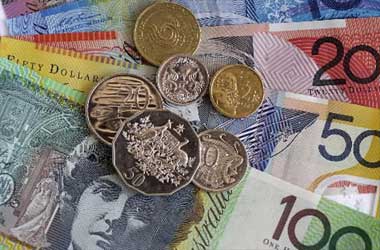 Following the publication of several better-than-anticipated Chinese statistics, the Aussie was seen eclipsing its rivals, confirming that events in the world’s second-largest economy continue to be an important determinant of currency movements. In June, China’s imports increased by 36.7% year on year, above the analysts’ expectations of 29.5%. “The Australian dollar is the biggest winner yesterday, supported by stronger Chinese trade figures,” says Elsa Lignos, RBC Capital Markets’ Global Head of FX Strategy.
Following the publication of several better-than-anticipated Chinese statistics, the Aussie was seen eclipsing its rivals, confirming that events in the world’s second-largest economy continue to be an important determinant of currency movements. In June, China’s imports increased by 36.7% year on year, above the analysts’ expectations of 29.5%. “The Australian dollar is the biggest winner yesterday, supported by stronger Chinese trade figures,” says Elsa Lignos, RBC Capital Markets’ Global Head of FX Strategy.
The Australian Dollar surged against the greenback to hit a high of 0.7503, even though the pair’s daily price charts still wield considerable influence over the trend. Over the preceding 24 hours, the GBB/AUD exchange rate had reached a new one-year high of 1.86, despite hints that the Sydney lockdown might be prolonged and rising fears about the Chinese economy.
The GBP/AUD has dipped lower to 1.8523 mainly due to the gain in the Australian Dollar following yesterday’s trade statistics. Despite this, the daily chart shows that the trend in GBP/AUD is still upward.
Worries over growth momentum have been rising recently as a result of a spate of dismal data releases, culminating in the People’s Bank of China (PBoC) unveiling further economic support in the guise of a Reserve Requirement Ratio (RRR) decrease a week ago. The stronger Chinese statistics released on Tuesday may help to calm growth worries and support Chinese economy dependent assets like the Australian Dollar. “A deceleration was predicted after May’s 51.1 percent growth, and 2020 comparisons are growing tougher,” adds Lignos. “However, it alleviated worries of a consumption downturn, especially given weaker buzz numbers following Friday’s RRR decrease.”
The trade statistics is significant for Australian exports since China is the primary customer for iron ore, coal, LNG, and gold, all of which support the Australian Dollar’s value. “China’s sluggish economy, which might affect commodities consumption, could have a drag effect on the yuan,” says Paul Mackel, HSBC’s Global Head of FX Research. Mackel believes the Australian Dollar will only rise if his three “Rs” acquire traction over time: stronger Australian interest rates, less investment risk, and access to raw commodities. In the meantime, Chinese exports increased by 32.2%, above the market’s expectation of 23.1%.
“In spite of a rise in COVID cases in southern China, which led to postponements in shipments at certain key harbors throughout June,” adds Lignos, “there was also a boom in exports.” China’s GDP statistics for the second quarter, which are expected mid-week, are yet to be published. “Official statistics appears to be painting a narrative of ‘move on, nothing here.’Irrespective of whether it is a completely accurate depiction of facts, it aids risk appetite on the day” Lignos agrees. Domestically, however, the Australian Dollar was not helped by a significant drop in June NAB business climate and optimism.
“The June poll was performed at the peak of the outbreak in NSW, as well as the initial phases of the ensuing lockdowns in that state and elsewhere.” Investor confidence has dipped, which is predictable. “This was especially noticeable in NSW and Qld, although optimism was typically lower nationwide,” says Alan Oster, NAB’s Group Chief Economist.
Business optimism dipped to +11 from +20, although it was still close to an all-time peak. Situation has improved to +24 from 36, although this was still a high score. “Given the potential of additional lockdowns, trust is likely to erode even further until immunization rates are markedly larger.”
“Any resurgence in activity will be tempered by this,” Lignos adds. Due to the high count of Covid-19 infections in existence, New South Wales Premier Gladys Berejiklian stated on Tuesday that the Sydney lockdown will almost definitely be prolonged on Friday.
The demand arose as the Australian government announced a compensation package that included cash for those who had been under shutdown in New South Wales. People who have missed over 20 hours of labour will be eligible for a A$352 reimbursement from the government. In the fourth week of a shutdown, the payouts will climb to $600. The payments will be reoccurring if the lockdown continues.
The steps will eventually minimize the lockdown’s negative economic repercussions, allowing for a robust recovery as accrued savings are poured to use.




